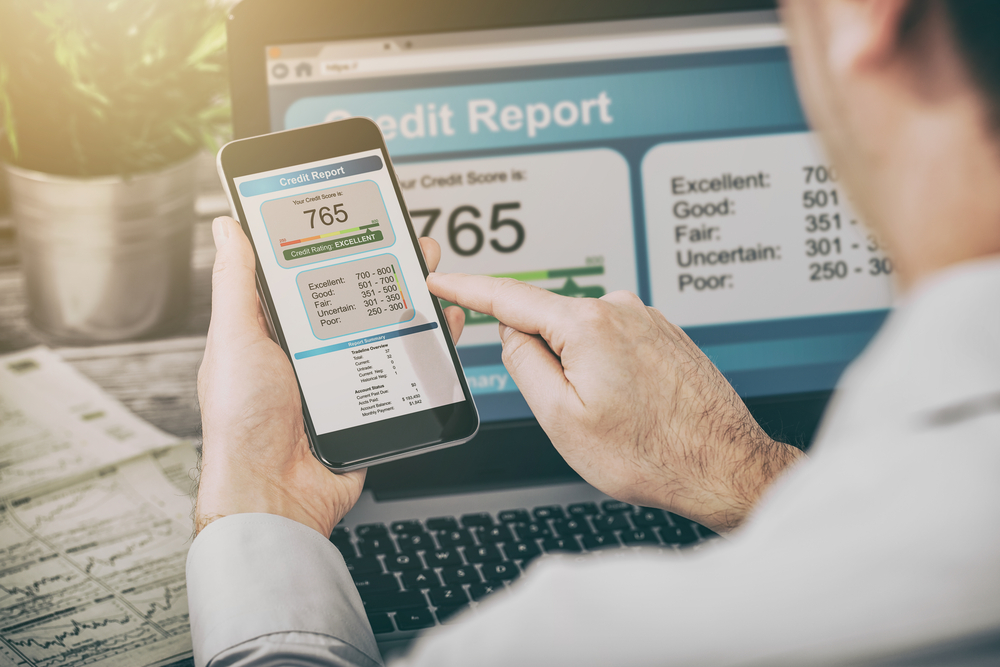
Is your credit score in the doldrums? If you’re in the market for a loan, you need your score to rise – fast.
Good news: You may indeed be able to give your score a quick lift, depending on why it’s sagging in the first place. A large amount of credit card debt, for example, may be more easily and speedily resolved than an account that’s in default.
Here are six ways to elevate your credit score, from those that can produce fast results to ones that require a slow and steady approach. Take a look.
Pay Down Credit Card Debt
If high credit card debt is weighing on your score, paying off all or most of it in one swoop could give your score a quick and significant boost.
First, the basics: A key component of your score is your credit-utilization ratio—the amount you owe on your credit cards as a proportion of your card limits. Utilization is calculated for individual cards and in the aggregate for all your card accounts. The lower your utilization ratio, the better. According to FICO, consumers with scores of 800 or higher (standard FICO and VantageScore credit scores range from 300 to 850) use an average 7% of their credit limits.
If you’re close to maxing out your cards, removing the debt should increase your score after the low or zero balances show up on your credit reports—likely in the following month or so. Don’t have enough cash lying around to make a big payment? Another strategy is to transfer the debt to an installment loan—say, a personal loan—or a home-equity line of credit. Such debts don’t factor into utilization ratios. Plus, the presence of the loan or HELOC on your credit report could improve your mix of credit, which accounts for 10% of a FICO score.
It’s a good idea to leave a credit card account open even after you stop using it. When you close a card, its credit line no longer counts toward your utilization—so if you have balances on other cards, your utilization ratio could climb.
Pay Credit Card Bills by the Closing Date
Typically, credit card issuers report your card balance as of the statement closing date—not the payment due date—to the credit agencies. If you pay off the balance a few days before your card’s closing date (look for it on your statement), then a low or zero balance will likely show up on your credit report. That will help keep your utilization down. “I call it the ethical credit-score hack,” says credit expert John Ulzheimer, formerly of FICO and Equifax.
Ask for a (Credit-Limit) Raise
Another trick that can help lower your utilization: Ask your card issuer to increase your limit. Issuers are generally willing to raise credit limits once a year, says Jeff Richardson, spokesman for VantageScore. Of course, you’ll have to avoid increasing your spending—and thus your card balances—to see a positive outcome from higher card limits.
The issuer won’t likely grant a large increase, however. And if it does, it may check your credit report, causing a “hard” inquiry, says Ulzheimer. A hard inquiry may shave a few points from your score.
Piggyback on Someone Else’s Good Credit
This strategy can have an especially strong impact for a young person with a thin credit file. If, say, a parent adds a child as an authorized user on a credit card account, that account and its history will pop up on the child’s credit report as long as the issuer reports it (most do). If the parent has had the account for several years, keeps utilization low and pays the bills on time, the child may see a quick and positive effect on his or her credit score. Card companies typically allow a cardholder to add anyone—not just a family member—as an authorized user.
Remove Negative Information From Your Credit Reports
Collection accounts, bankruptcies and other black marks can heavily damage your score, so clearing such derogatory information from your credit reports could give your score a fast and substantial lift, especially if the information has been on your report for less than two years, says Gerri Detweiler, credit expert and education director for Nav, a site offering credit scores and information for businesses.
First, check your credit reports. You can get a free report every 12 months from each of the major credit agencies—Equifax, Experian and TransUnion—at www.annualcreditreport.com.
If you find an account that you don’t recognize, it could be the result of an identity thief using your name to get credit, or a lender may be reporting the account in error. If a fraudster is at work, you can take steps to block the fraudulent information from your credit reports. If the negative account is the result of an error, contact the lender or whoever furnished the information in question, and file a dispute with each credit agency whose report lists the account.
If you missed a payment once but otherwise have a long and perfect payment history, you may be able to persuade the biller to stop reporting the delinquency by writing a goodwill letter explaining your uncharacteristic slipup.
Let Time Work Its Magic
It’s the opposite of a quick fix, but the simple passage of time can heal a suffering score as long as you practice good credit habits. As a delinquency gets older, its impact on your credit score decreases, and it falls off of your report after seven years.
Plus, the length of your credit history makes up 15% of your FICO score. As the average age of your credit accounts lengthens, your score benefits. “You won’t max out in that category until you’ve had credit for decades,” says Ulzheimer, who didn’t see his own score hit 850 with regularity until he’d had credit accounts for about 25 years. According to FICO, consumers with scores of 800 or higher have an average account age of 11 years, and their oldest account was opened 25 years ago.
If you close a credit card, the account will still appear on your credit report and factor into the age calculation for about 10 more years. Opening a new card, however, lowers the average age of your accounts.

























